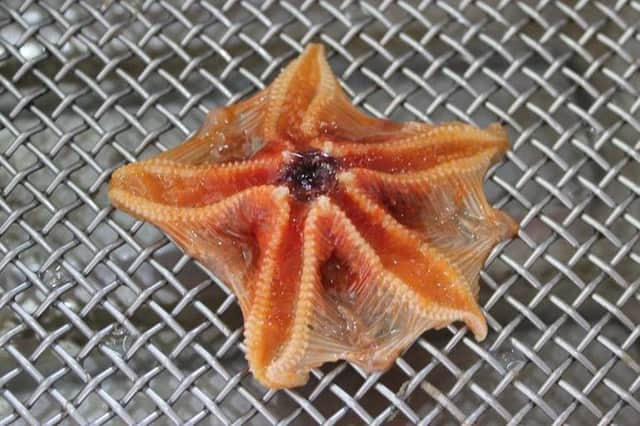Study shows deep-sea creatures swallowing plastic since at least 1970s


Sea creatures living in the deepest parts of the ocean have been eating plastic debris for at least 40 years, according to new Scottish research.
The study also shows levels of contamination have remained steady since the 1970s, despite the dramatic increase in the quantity of plastic rubbish entering the marine environment.
Advertisement
Hide AdAdvertisement
Hide AdThe findings come from an investigation of sealife collected from the Rockall Trough, an area of deep sea off the west coast, carried out by scientists at the Oban-based Scottish Association for Marine Science (Sams).
The researchers examined preserved samples of bottom-dwelling starfish and brittle stars collected from the trench over the past four decades to assess the extent of synthetic particles they had ingested.
Traces of eight different plastics, including polyester and nylon, were found in the stomachs of specimens that lived more than 2,000 metres below the ocean surface between 1976 and 2015.
Analysis showed the quantities ingested were similar throughout the period.
Lead researcher Winnie Courtene-Jones, a University of the Highlands and Islands PhD student at Sams, said: “Mass production of plastics only began in the 1940s and 1950s, so it would be reasonable to expect less plastic in our earlier samples, with a subsequent upward trend to the present day levels.
“But we haven’t seen that. In fact the level of microplastic ingestion is remarkably similar throughout the time series.
“This data shows, for the first time, the long-term prevalence of microplastic pollution in the deep sea and indicates that microplastics may have been present on the sea floor of the Rockall Trough prior to 1976.”
The scientists found that nearly half of starfish and brittle stars sampled had swallowed microplastics, defined as fragments measuring less than 5mm in size.
Advertisement
Hide AdAdvertisement
Hide AdWhen ingested by sea creatures, microplastics may be retained in their bodies and passed up the food chain.
The latest study follows on from Sams research in 2017, which for the first time quantified levels of microplastic ingestion in marine creatures living at depths of 2,200m.
“To find such high levels of microplastic ingestion among deep-sea creatures sampled more than 40 years ago shows that plastic pollution in our oceans is not a new problem,” said co-researcher Dr Bhavani Narayanaswamy, a deep-sea ecologist at Sams.
“Previous studies have highlighted the current levels of plastic pollution, or given us a snapshot in time, but we need more long-term data like this if we are to find out the true extent of the problem.”
The team is calling for further research into historical marine plastic pollution, which they believe could help combat the modern-day crisis.